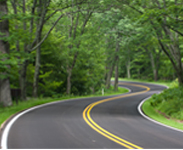Ignite the Flame: Installing Electronic Ignition In Your Harley-Davidson V-Twin
Spark. It’s the key to generating horsepower. The hotter the spark, the more efficient the burn. The more efficient the burn, the more horsepower you create. It’s a simple concept, but there are many ways to achieve the goal, and the history of Harley ignition systems demonstrates the various approaches that bike manufacturers have taken over time. Available aftermarket electronic ignition systems have opened up the possibility of cutting edge, high performance “spark” to anyone looking to invest a little elbow grease. Check out the step-by-step instructions below to get started on your Harley. But first, a quick lesson in ignition history to give you some context: prior to the 1980s most Harley-Davidson type engines used a breaker type ignition system. The system was just a basic switch. When the switch opened, a spark would fire. Unfortunately, this system had faults. When the engine was revved high, the switch tended to bounce and cause a loss of spark. It also fired on both compression and exhaust strokes, which led to a weaker spark. Despite its shortcomings, the big advantage to this type of ignition system was that it was fully mechanical. Roadside repairs could be done to these types of systems with a little patience. The system worked well as a stock system, but the introduction of electronic ignition systems helped to bring higher performance to the next generation of bikes.
The Performance Ignition Era: More Powerful, but More Complicated
Performance ignition systems not only help increase horsepower, but they help with fuel conservation and better overall throttle response. Electronic ignition systems can get complicated, though. On some stock systems there are three or more components to the system. A sensor near the crank or cam shaft usually signals when to fire the spark plug. A rotor passes a magnet and sends an electrical signal. The sensor is usually connected to the module or computer unit. Some motorcycles have a computer that controls many functions and the ignition function is located within this computer. As you might guess, these systems can be complicated to upgrade. The module sends a signal to the ignition coil, which turns 12 volts into thousands of volts to make a hot spark. The ignition coil is connected to the spark plugs through spark plug wires, which are specially designed for their specific duty. A vacuum operated switch uses engine vacuum to send a signal to the computer to advance or retard the spark.
This site and articles contained herein are provided for general informational purposes only and are not a substitute or intended as professional advice. Please be sure to refer to your owner’s manual or consult a mechanic for information specific to your motorcycle. The information contained on this site and articles contained herein are provided on an “as is” basis with no guarantees of completeness, accuracy, usefulness or timeliness and without any warranties of any kind whatsoever, express or implied. Rider Insurance Company and its affiliates (together, “Rider”) assume no responsibility for any errors or omissions in the content of this site and articles contained herein. Any action taken upon this information is strictly at your own risk and Rider will not be liable for any losses or damages in connection with your use of this site and articles. Additional terms and conditions apply and are available at https://www.rider.com/plymouth-rock-assurance-general-terms-and-conditions/.

Getting the Aftermarket Spark: Upgrading Your Electronic Ignition System
A great thing about some aftermarket electronic ignition units is that they simplify this whole system. A self-contained unit which installs near the engine’s crankshaft combines a sensor and computer control unit all in one. It eliminates some wires to make wiring much easier. Here’s how it’s done.
The unit is installed in the ignition cover on the engine and requires the old system to be completely removed. You will see a V-notch in the sensor plate. Mark the location of the notch in the engine casing for installation of the new unit. Replace the ignition rotor with one recommended for use with the new ignition unit. Install the new unit with the standoff screws loose. This will allow you to rotate the unit when the motorcycle is running and will help you achieve more accurate timing. Run the wires up the frame and away from anything that is hot. Replace the old ignition coil with the new one. Follow the wiring diagram to hook up the coil to the new system. The vacuum operated switch is also wired to the new unit. (For motorcycles without the vacuum operated switch, the wire is usually just capped off.) A wire from the ignition switch or starter is also connected to the coil at this time. Spark plug wires can be connected from the coil to the spark plugs. The manufacturer specifies which wire is for the front and back cylinder.
- Remove the timing plug at the bottom of the cylinders on the primary side of the engine. Insert a clear plastic plug to see the timing mark on the flywheel.
- Check for recommended settings on the ignition unit via the manufacturer’s specifications. A single-fire system works best because it creates the hottest spark.
- Start the engine. It may have a stumble.
- Turn the ignition unit counter-clockwise. This will advance the timing.
- If the engine will not start at all, the initial timing has to be set. Find top dead center on the front cylinder.
- Rotate the ignition unit clockwise until the LED light turns off.
- Turn it counter-clockwise until it just turns back on. This should give the bike an initial timing to start.
- Once the motorcycle is running, set the throttle at 2000rpm.
- Rotate the ignition unit until the timing mark on the flywheel is centered in the timing hole on the other side of the engine. The ignition should now have the proper timing. Advance settings on the ignition unit may give more horsepower, but they will need to be experimented with until the engine runs just right.
Take the bike for a ride to check the throttle response. Adjustments may need to be made to get it dialed-in perfectly. Dyno tuning will give the most accurate results. Once everything has been dialed-in, the ignition cover and gasket can be reinstalled and the job is complete!
Plymouth Rock Assurance is a marketing name used by a group of separate companies that write and manage property and casualty insurance in multiple states. Motorcycle insurance in New Jersey and Pennsylvania is underwritten by Rider Insurance Company. Each company is financially responsible only for its own insurance products. Actual coverage is subject to the language of the policies as issued by each separate company.





